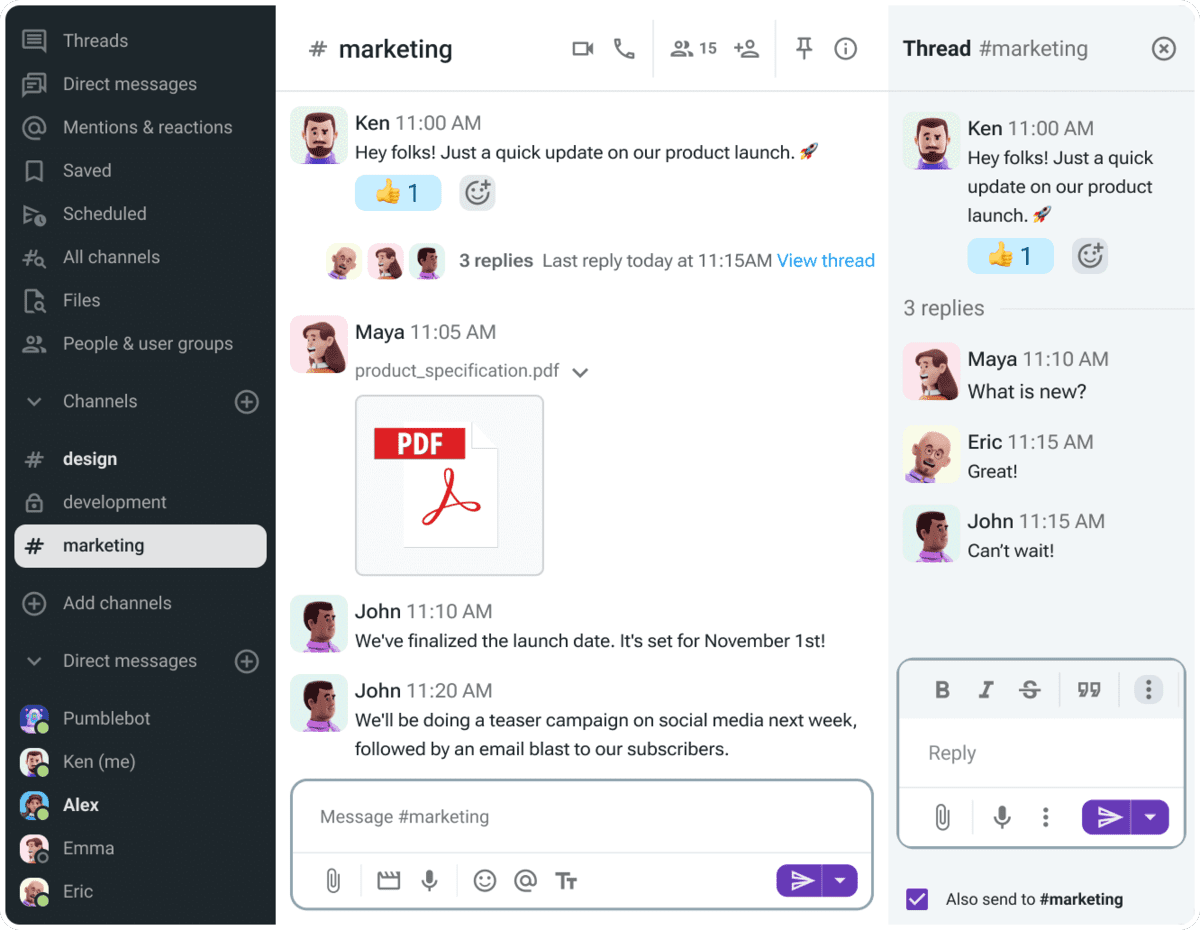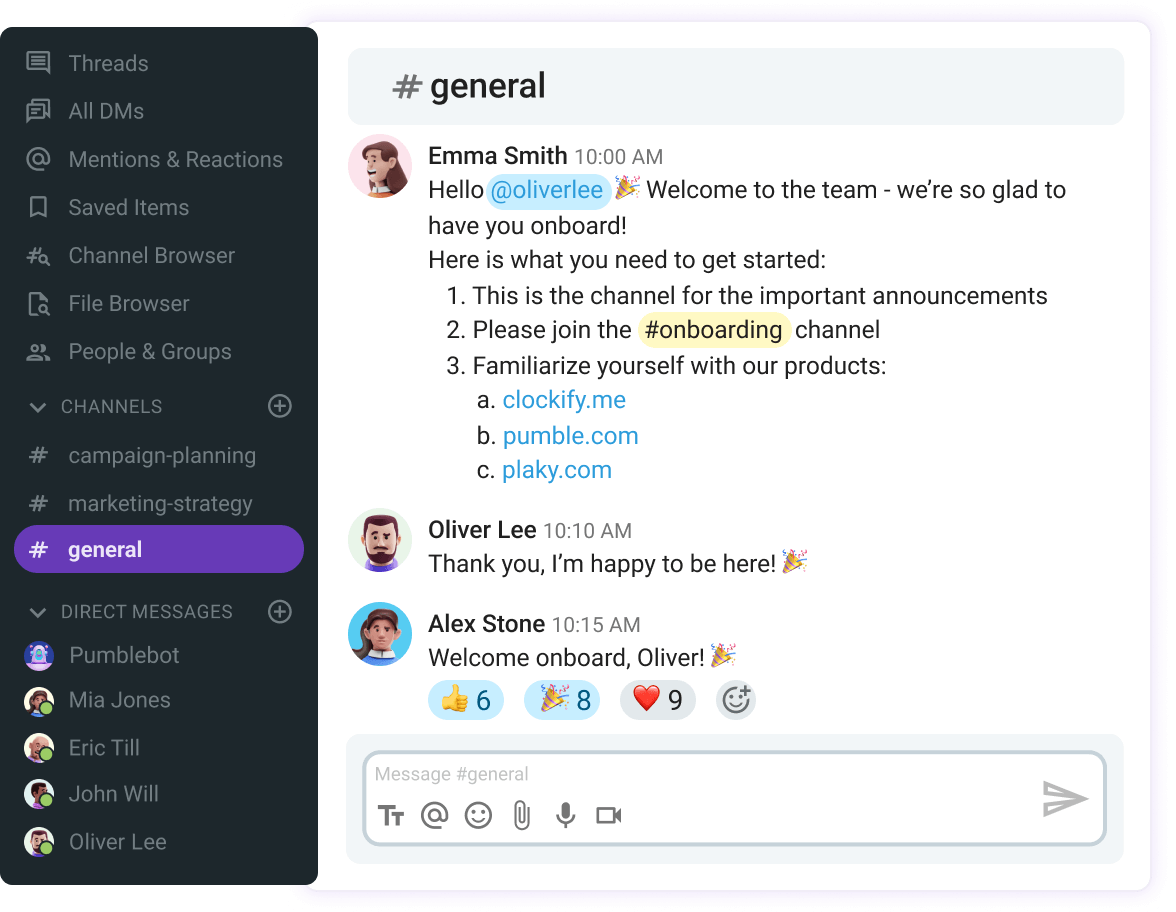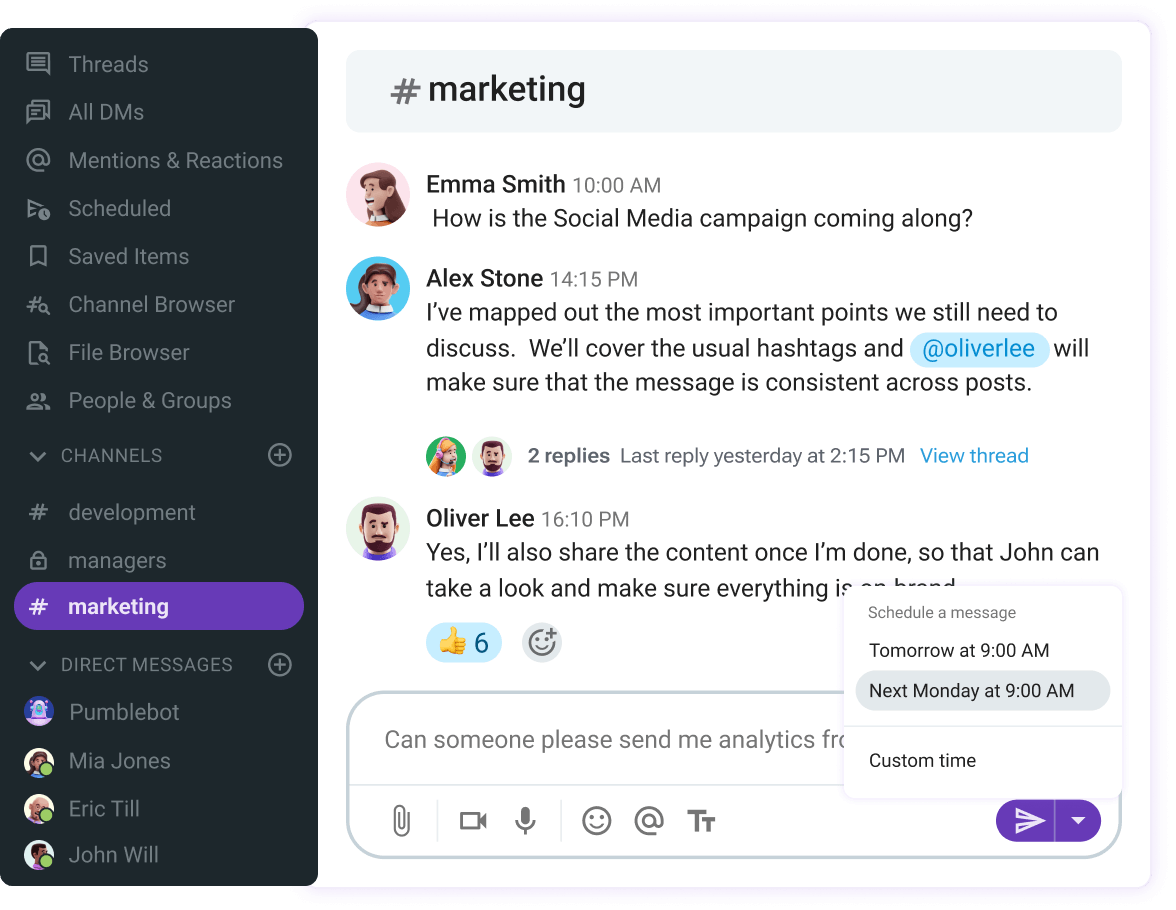As a leader, you juggle communication daily among clients, employees, and stakeholders, and it’s something that demands your constant attention.
The repercussions of poor communication can be severe, leading to:
- Wasted time,
- Increased costs, and
- Decreased productivity.
On the other hand, effective communication fosters efficiency and enhances collaboration.
Effective communication begins at the core of your team, playing a vital role in employee engagement, satisfaction, retention, and productivity.
Studies have shown that organizations with strong communication practices see up to a 25% increase in productivity.
This is why building a communication-first culture in the workplace is essential. It empowers employees to openly share their ideas and needs, driving your business forward.
Let’s explore a few straightforward strategies to cultivate this culture.

Table of Contents
Keep everyone informed
The first step in building a communication-first culture at work is committing to open and honest communication from both leaders and team members.
Managers, team leaders, and executives should set an example by sharing regular updates and as much information as possible with employees. For example, you can take time to share updates during regular team meetings.
This will help everyone feel more connected to the organization and see how their work contributes to the overall strategy. Besides, when you keep everyone in the loop, you prevent (negative) surprises when important decisions are made and help to foster a positive work environment.
Another way to keep your team informed is to use:
- Direct messaging for personal updates and
- Dedicated channels for team-wide or company-wide communication in your internal communication app.
While frequent updates are important, avoid overwhelming your team by keeping messages relevant to the people receiving them. This approach supports productivity and helps limit message overflow.

Consult your employees on their preferred communication channels to make regular communication more effective. For example, if someone isn’t keen on messaging, try hopping on a quick video or voice call, or send a video or voice message to deliver important information. When you communicate in ways that suit employees’ preferences, it strengthens the overall communication culture.
Pumble is an employee communication app for teams of all kinds
Share goals and results
Routine business updates build transparency, but sharing goals and results helps keep everyone aligned and focused on the same outcomes. It also fosters a culture of openness across the team.
Make it a practice to regularly discuss both team and company goals during meetings. This can inspire new ideas and encourage proactive problem solving, as teammates understand the broader vision. It also strengthens their sense of responsibility and boosts team morale.
Another great way to promote a positive communication culture is by recognizing and rewarding employee contributions.
Use mentions and reactions in your group messages to highlight teammates, celebrate successes, and keep the team motivated. Regularly acknowledging hard work helps employees see that they’re doing well and positively impacting the team.

Whether it’s giving praise or discussing areas for improvement, it’s a good practice to share files in your communication app to make reports accessible for everyone.
Be open and take action
When you’re building a culture of open and honest communication, you’re bound to receive ideas and feedback. While your company may have an open-door policy, how well do you truly consider your teammates’ suggestions?
Encourage team members to:
- Share ideas,
- Ask questions,
- Give feedback, or
- Even just chat.
Actively listening and acting on valuable suggestions fosters trust and makes people feel their input is valued.
If feedback isn’t coming to you, try reaching out individually to ask for it. When it’s constructive feedback, give it some careful thought rather than dismissing it.
In your communication app, there are several effective ways to share and receive feedback:
- Video calls for deeper, real-time discussions,
- Voice messages for quick exchanges without scheduling, and
- Threaded conversations to keep ongoing discussions organized and accessible for future reference.
Even if you can’t act on all feedback, it’s essential to acknowledge it. When you bring suggestions to leadership, share how they have influenced decisions. Reinforce to your team that their ideas are heard and valued – this is key to building a positive communication culture where everyone feels comfortable offering feedback.
Make it a routine
To maintain a communication-first culture, it’s important to create habits that nourish it. Make open communication a natural part of your regular meetings through frequent updates and check-ins.
Encourage active participation with activities like “round robins”, where each person can contribute during meetings or try rotating the meeting host role to engage attendees. Assigning specific agenda points to different team members can also encourage them to share their perspectives.
These practices not only enhance engagement in daily work but also help team members grow more comfortable expressing their viewpoints with others.
Simplify regular communication by scheduling messages in advance for important reminders or updates. This feature allows you to plan messages so they reach people at the most effective times.

As we mentioned earlier, leaders must set the standard with consistent updates and transparent communication. While you’re already committed to enhancing your communication culture, be sure to involve fellow managers and decision makers so that the practice spreads throughout the company.
Creating a comfortable environment for open communication can also be achieved with regular team-building activities. These don’t have to be limited to annual retreats; you can incorporate them into video conferences or other casual settings. Scheduling monthly or quarterly events helps employees connect on a personal level, building trust and encouraging them to share ideas and experiences openly.
💡 PUMBLE PRO TIP
If you’re looking for ideas for fun and engaging team-building activities, check out our suggestions:
Improve team communication with Pumble
As you work on fostering open communication within your team, don’t forget to leverage technology to make the process easier. A reliable centralized communication app can make all the difference, and that’s where Pumble comes in.
Pumble enhances both internal and external communication with user-friendly features designed to meet all your needs, from messaging and calls to organizational tools like search and file sharing. It streamlines interactions and helps your team connect effortlessly.
Curious about how Pumble can support your employees and boost your business?







